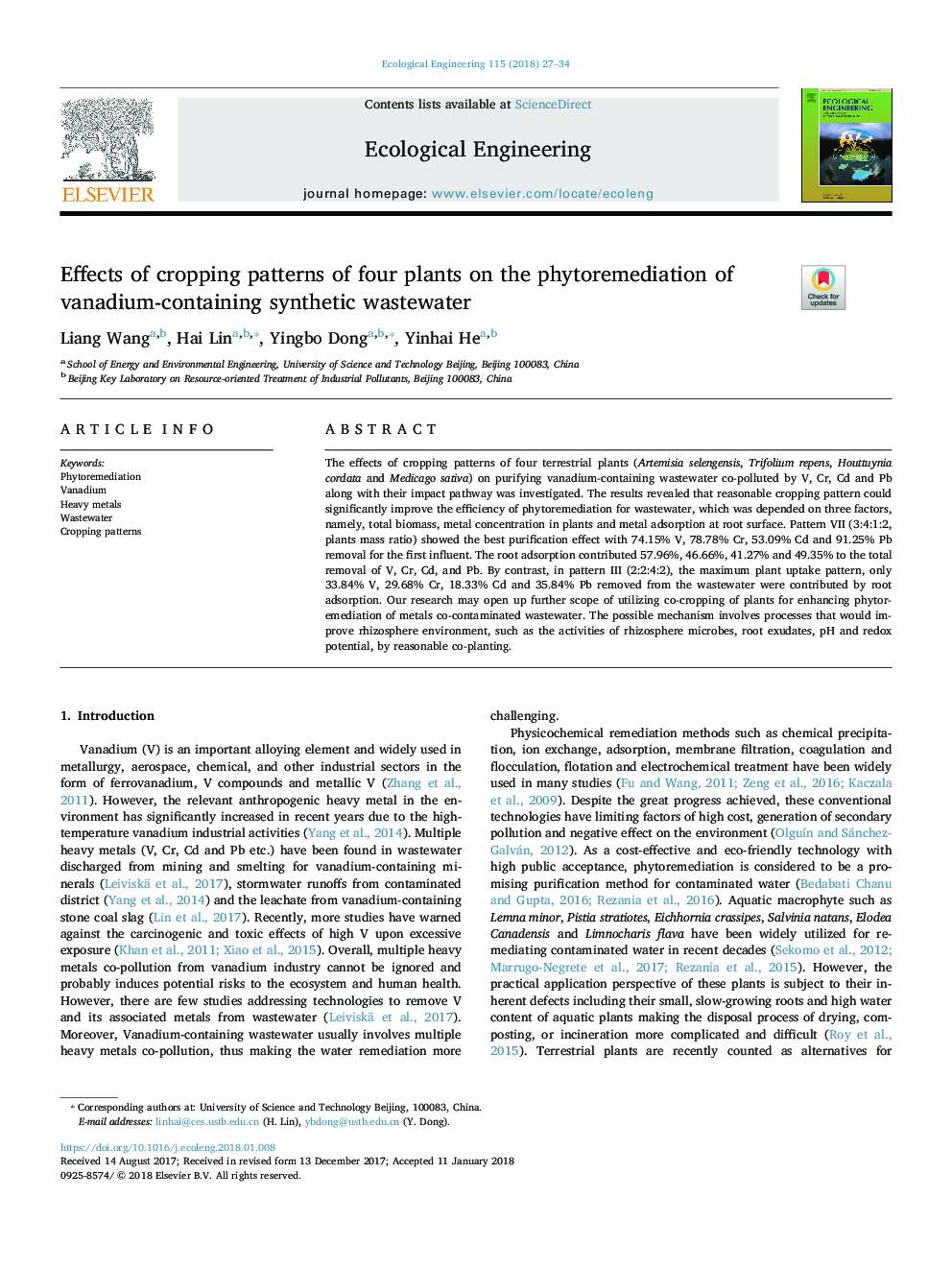| Article ID | Journal | Published Year | Pages | File Type |
|---|---|---|---|---|
| 8847944 | Ecological Engineering | 2018 | 8 Pages |
Abstract
The effects of cropping patterns of four terrestrial plants (Artemisia selengensis, Trifolium repens, Houttuynia cordata and Medicago sativa) on purifying vanadium-containing wastewater co-polluted by V, Cr, Cd and Pb along with their impact pathway was investigated. The results revealed that reasonable cropping pattern could significantly improve the efficiency of phytoremediation for wastewater, which was depended on three factors, namely, total biomass, metal concentration in plants and metal adsorption at root surface. Pattern VII (3:4:1:2, plants mass ratio) showed the best purification effect with 74.15% V, 78.78% Cr, 53.09% Cd and 91.25% Pb removal for the first influent. The root adsorption contributed 57.96%, 46.66%, 41.27% and 49.35% to the total removal of V, Cr, Cd, and Pb. By contrast, in pattern III (2:2:4:2), the maximum plant uptake pattern, only 33.84% V, 29.68% Cr, 18.33% Cd and 35.84% Pb removed from the wastewater were contributed by root adsorption. Our research may open up further scope of utilizing co-cropping of plants for enhancing phytoremediation of metals co-contaminated wastewater. The possible mechanism involves processes that would improve rhizosphere environment, such as the activities of rhizosphere microbes, root exudates, pH and redox potential, by reasonable co-planting.
Related Topics
Life Sciences
Agricultural and Biological Sciences
Ecology, Evolution, Behavior and Systematics
Authors
Liang Wang, Hai Lin, Yingbo Dong, Yinhai He,
